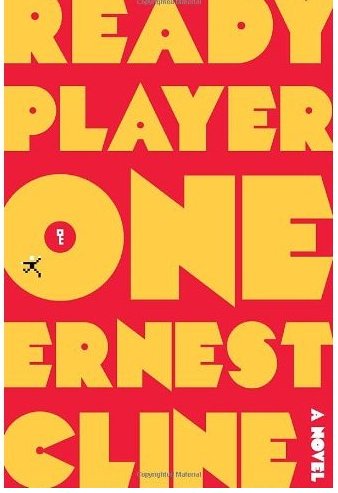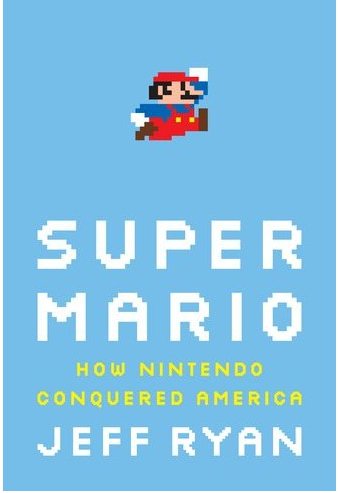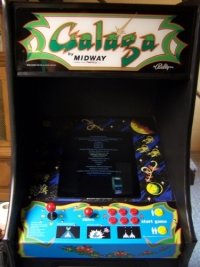Can a 53-year-old nerd with bad-hand eye coordination excel at esports?
 Can a 53-year-old nerd with bad-hand eye coordination excel at esports? My essay explores that and the whole college esports scene.
Can a 53-year-old nerd with bad-hand eye coordination excel at esports? My essay explores that and the whole college esports scene.
https://expmag.com/2020/01/forget-football-video-games-are-the-next-big-college-sport/
New game Obduction in works from makers who brought us Myst and Riven

Remember Myst? That amazing, groundbreaking, mind-bending game that mystified you back in the 1990s? Then came Riven in 1997. The two were the best-selling computer games of the 20th century. Then, not much of interest from brothers Robyn and Rand Miller, the team who founded the game company Cyan and dreamed up these two revolutionary, open-ended adventure puzzle games. But there's a new game in the works from the brothers Miller, called Obduction.

Remember Myst? That amazing, groundbreaking, mind-bending game that mystified you back in the 1990s? Then came Riven in 1997. The two were the best-selling computer games of the 20th century.
Then, not much of interest from brothers Robyn and Rand Miller, the team who founded the game company Cyan and dreamed up these two revolutionary, open-ended adventure puzzle games which, compared to the lightning-fast reload speed of a Call of Duty, plodded along at the pace of a hibernating snail.
Those games plopped you onto a proto-steampunk island where, well, it wasn’t exactly clear what your goal was. But it was a fascinating ride. You wandered around, looking at every map and book, and being lured in by the preternatural quiet and creepy ambience soundtrack. What was a clue? What was a puzzle? What was a red herring?
As Myst celebrates its 20th anniversary, there’s some new activity. A new game from Cyan. One in the spirit of the first two, and one that just might provide the same tricksy thrills and head-scratching puzzles of Myst and Riven.
As I write for GeekDad, there's a new game in the works called Obduction. Check out the rest of the post here.
Two New Books Lavish in 80s Video Game Culture
 READY PLAYER ONE By Ernest Cline [Crown, 374 pp. $24.00]
READY PLAYER ONE By Ernest Cline [Crown, 374 pp. $24.00] SUPER MARIO: How Nintendo Conquered America, By Jeff Ryan [Portfolio, 292 pp., $26.95]It’s easy to cast a long shadow of nostalgia across your geeky past, now that you are standing taller.
SUPER MARIO: How Nintendo Conquered America, By Jeff Ryan [Portfolio, 292 pp., $26.95]It’s easy to cast a long shadow of nostalgia across your geeky past, now that you are standing taller.
There’s no shame, no risk of ridicule or reprisal, now that nerds top the food chain. More confident, you might even find yourself admitting, “Sure, I used to play Dungeons & Dragons. Had an 18th-level paladin named Argathon. One righteous orc-slaying dude.’’
I do. I played more than my share of video and role-playing games during a less friendly era, the 1980s. Fantasy and science fiction had not come out of the closet. The financial success of genre franchises had not yet made geekery acceptable. Gaming culture was nonexistent.
A bonus of my then fringe game habit: It felt user-driven, indie, even subversive. When free time, not money, was my currency, gaming created a peculiar, and intimate, community. I inserted real quarters into singular machines shared with others. No Internet. No interruptions from texts. Total immersion in virtual worlds was possible even as, paradoxically, cutting-edge special effects were analog, not digital.
And a game of Donkey Kong, its chunky graphics about as sophisticated as the dungeons I sketched on graph paper, might last only a minute, while a game of D&D, limited to the primitive technology of dice, pencils, and brainwaves, would take months.
Differing both in approach and success level, two new books -- Ernest Cline’s dystopian sci-fi novel “Ready Player One’’ and Jeff Ryan’s historical reportage “Super Mario: How Nintendo Conquered America’’ -- plumb and pay tribute to the genesis of our gaming culture. To a time when to find out who was the best at Asteroids or Galaga, you hoofed it down to the mall to witness the heroism gracing the “high score’’ screen, where someone’s tag -- “ZAK’’ or “LED’’ -- was hallowed only in the halls of your local arcade.
 Ryan, a video game critic, painstakingly charts the Japanese company Nintendo’s startling success. When its 1980 Space Invaders rip-off Radar Scope failed, technicians retrofitted 2,000 of the machines with a new arcade game, designed by an underling named Shigeru Miyamoto. Donkey Kong was born, as was the character Mario, based on a real mustachioed landlord who once showed up at Nintendo’s US headquarters to collect the rent and “grew so incensed he almost jumped up and down.’’ The red overalls and hat came later.
Ryan, a video game critic, painstakingly charts the Japanese company Nintendo’s startling success. When its 1980 Space Invaders rip-off Radar Scope failed, technicians retrofitted 2,000 of the machines with a new arcade game, designed by an underling named Shigeru Miyamoto. Donkey Kong was born, as was the character Mario, based on a real mustachioed landlord who once showed up at Nintendo’s US headquarters to collect the rent and “grew so incensed he almost jumped up and down.’’ The red overalls and hat came later.
Ryan does a fine job describing Nintendo’s growing rivalry with Atari and Sega and subsequent shrewd moves, as arcades shuttered, to dominate the home console market. Super Mario Bros. became the “dense’’ game-changing killer app, Ryan writes, which “called for deep exploration instead of facile button mashing.’’ A new generation of gamers could explore endlessly, wandering tubes, hopping platforms, and collecting shells and coins. Nabbing the high score wasn’t the point. Mario helped kill quarter-based game culture.
Ryan can be insightful, and his prose colorful, but also distracting. Images and metaphors compete and clash - the Zucker Brothers follow Derrida, a music reference is slammed cheek-by-jowl with a baseball analogy. At times, the text seems translated from the Japanese. What is “a nebula’s improvement in graphics’’? A “veritable sleuth of unsold Teddy Ruxpins’’? It’s also difficult to picture the graphical evolution of Mario and his game world when the book has no illustrations.
Most frustratingly, we never hear directly from any Nintendo designers, not even Miyamoto or company head Hiroshi Yamauchi. Curiously little on-the-ground reporting of personal travails or internal corporate tensions. After the first 100 pages, the narrative devolves into a cheery laundry list of game releases. It’s as if Ryan reported the book from the distance of the Internet.
Still, “Super Mario’’ remains an important link to understanding how we got from Donkey Kong to Wii, and why the wee Jumpman still rules. “Mario is the id: working off of instinct, never having much of a plan, always able to leap into the middle of things. We all become younger as we play Mario, because when we’re Mario we simply play.’’
More so than Ryan, Cline banks on blatant nostalgia for our geeky pasts. The year is 2044 and the young protagonist of “Ready Player One,’’ 17-year-old orphan Wade Watts, narrates his own progress in an elaborate, online scavenger hunt. He lives as an economic refuge in a crime-ridden shanty town, “The Great Recession was now entering its third decade,’’ Watts says, and like many who have given up on the “real world,” he spends his waking hours as an avatar, named Parzival, in a massive, Matrix-like virtual space called OASIS.
Created by a reclusive, Reagan-era game designer, the game melds Tolkienesque riddles with ’80s pop arcana - from Matthew Broderick’s lines in “WarGames’’ to dungeons designed by D&D co-creator Gary Gygax. Solve the puzzles and you inherit the game designer’s vast fortune. An old-fashioned “high score’’ leader board pops up periodically in the narrative to remind us who’s winning.
Such is the post-apocalyptic, nerd-friendly premise of “Ready Player One.’’ Watts is one of thousands of other players known as “gunters,” or “egg hunters” because they are looking for Easter eggs, or clues, hidden in the thousands of designer virtual lands that populate the OASIS. Watts steeps himself in the period, eschewing the world of 2044 to effectively live and breathe the era’s most mundane factoids, memorizing characters from “The Breakfast Club,” plot points from “Star Wars,” tactics for an obscure arcade game like Joust. Clearly having fun with the reader, and himself, Cline stuffs his novel with a cornucopia of pop culture, as if to wink to the reader, “Remember the TRS-80? Wasn’t it cool?’’ The conceit is a smart one, and we happily root for Watts/Parzival and his gaming buddies on their quest for the big egg -- and hope they win before a villainous, corporate-run gaming guild declares “game over.’’
Not that the novel is without its problems. Cline, the screenwriter who gave us “Fanboys,’’ oddly chooses a first-person narrator. What is the occasion for a 17-year-old explaining the plot of “Blade Runner,’’ or that “ ‘2112,’ Rush’s classic sci-fi-themed concept album’’ hit record stores “in 1976, back when most music was sold on twelve-inch vinyl records’’? Long, awkward passages of exposition bog down the story, and conflict with Watts’s own distinctive narrative voice. A third-person, roving point of view would more logically allow for these passages of authorial intrusion. Also a bummer: Much of the action is virtual, statically describing Watts’s online moves: “I took a screenshot of this illustration and placed it in the corner of my display.’’
One can picture much of this working better on the big screen, where asides won’t be needed. We’ll hear “She Bop” on the soundtrack or see a character wearing a “Muppet Show” T shirt and get it. No surprise, Cline’s movie adaptation of Ready Player One has already been sold.
But ignore these narrative hiccups and “Ready Player One’’ provides a most excellent ride. Once the story is up and running, and the novel blasts to its world-ending climactic battle, I found the adventure story and its revenge of the dorks dream fully satisfying.
Both Cline and Ryan’s books lavish in the toys and pastimes of our youth. And also nostalgia, which may soft-focus the hard and real edges, and yet we're happy to lavish in it nonetheless. We aging humans traffic in it. Perhaps we must to make sense of our past lives.
Like the film “Super 8,’’ these two books play also into a final fantasy: that things were once simpler. Today, some attribute the violence in Norway, unfairly, to video games. Suddenly ’80s pop culture looks less troubled. But of course, the arcade and role-playing games of yore were controversial scourges bent on the destruction of youth. Remember?
Classic Video Game Competition Returns to Funspot
 If you’re a 30- or 40-something geek like me, you probably played video games as a kid. Not on the personal computer, which in the 70s and 80s was only in its infancy. I mean the big, hulking, stand-up video arcade machines. The ones that ate your allowance (or cafeteria milk money): Pong, Space Invaders, Galaga, Pac-Man, Donkey Kong, Dig Dug, Joust, Centipede, Tron, Dragon’s Lair, and my personal favorite, Robotron 2084.
If you’re a 30- or 40-something geek like me, you probably played video games as a kid. Not on the personal computer, which in the 70s and 80s was only in its infancy. I mean the big, hulking, stand-up video arcade machines. The ones that ate your allowance (or cafeteria milk money): Pong, Space Invaders, Galaga, Pac-Man, Donkey Kong, Dig Dug, Joust, Centipede, Tron, Dragon’s Lair, and my personal favorite, Robotron 2084.
As I wrote about last summer after visiting the American Classic Arcade Museum at Funspot in Weirs Beach, New Hampshire, these games have had a powerful effect on an entire generation. And now that generation is all grown up. Like with a lot of childhood or adolescent hobbies looked back on with the 20-20 hindsight of adulthood, these old school arcade games can generate a powerful wave of nostalgia.
To sate this desire, the annual International Classic Videogame Tournament returns to the American Classic Arcade Museum (ACAM) this weekend (Thursday, June 2 through Sunday, June 5). ACAM is the “first 501c3 non-profit organization dedicated to preserving and displaying vintage coin-operated amusements” (so sez the website). If you saw the documentary King of Kong, ACAM is the familiar site of the Donkey Kong showdown. If you were at PAX East in Boston, you probably saw the traveling collection of video games they brought down from New Hampshire for all of us to play. Wicked fun.
In the tourney, players will compete in a variety of arcade games. To maintain a fair and balanced playing field, ACAM says, the game titles won’t be announced until the first day of the event. The only exception will be the first ever “World Championships of Galaga®,” to celebrate Galaga’s 30th anniversary.
What’s cool is, unlike other museums, at ACAM you can touch the displays. Some 300+ games are available for play. Best of all, the place is a time capsule. Classic 80s music is pumped into arcade, and there isn’t a song or a game, any newer than 1987.
And if you support the preservation of these classic games, please donate to ACAM.
Ethan Gilsdorf is the author of the award-winning book Fantasy Freaks and Gaming Geeks: An Epic Quest for Reality Among Role Players, Online Gamers, and Other Dwellers of Imaginary Realms, his travel memoir investigation into fantasy and gaming subcultures the Huffington Post called “part personal odyssey, part medieval mid-life crisis, and part wide-ranging survey of all things freaky and geeky,” National Public Radio described as “Lord of the Rings meets Jack Kerouac’s On the Road” and Wired.com proclaimed, “For anyone who has ever spent time within imaginary realms, the book will speak volumes.” Follow Ethan’s adventures at http://www.fantasyfreaksbook.com